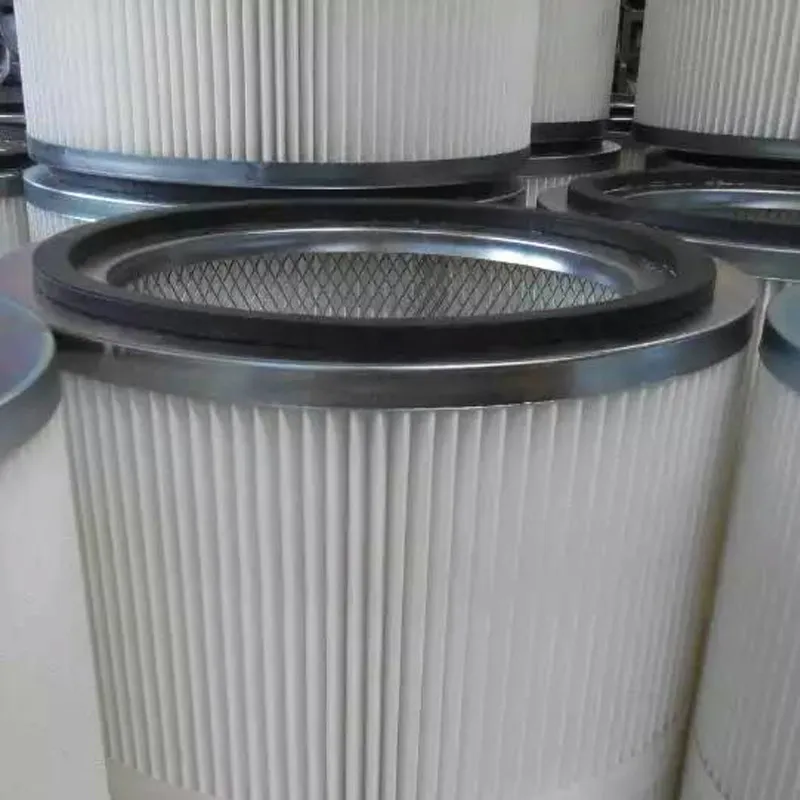 Tel:
+8618931101301
Tel:
+8618931101301
12 月 . 04, 2024 16:18 Back to list
pulse jet cartridge filter
Understanding Pulse Jet Cartridge Filters A Comprehensive Overview
Pulse jet cartridge filters are essential components in industrial dust collection systems, renowned for their exceptional efficiency in capturing fine particulates. As industries continue to prioritize compliance with environmental regulations and workplace safety, these filters have gained prominence across various applications, from manufacturing to pharmaceuticals.
What is a Pulse Jet Cartridge Filter?
At its core, a pulse jet cartridge filter consists of a series of cylindrical filter cartridges housed in a collector unit. These cartridges are made of porous materials that allow air to pass through while trapping dust and other particulates. The unique feature of this filtering system is the pulse jet mechanism. This method utilizes bursts of compressed air to clean the filters, ensuring optimal performance and longevity.
The Mechanism of Action
The operational principle behind a pulse jet cartridge filter is both simple and effective. As contaminated air enters the filter system, it flows through the filter cartridge, where dust particles are captured on the exterior surface. Once the cartridges reach a predetermined level of saturation, a control system activates the pulse jet cleaning mechanism. This system releases a high-pressure jet of air directed at the filters, dislodging the accumulated dust and allowing it to fall into a collection hopper.
This cleaning cycle typically occurs at regular intervals or can be triggered by differential pressure sensors, which monitor the pressure drop across the cartridges. The ability to clean the filters without shutting down the system makes pulse jet cartridge filters highly efficient and reduces downtime in industrial operations.
Applications and Benefits
Pulse jet cartridge filters are utilized in a wide range of industries, including woodworking, electronics, metalworking, and food processing. Their versatility in handling different types of dust, from fine powders to larger particulate matter, makes them suitable for diverse applications.
The benefits of using pulse jet cartridge filters are manifold
pulse jet cartridge filter

1. High Efficiency These filters can achieve high collection efficiencies, often exceeding 99%, effectively improving air quality and meeting regulatory standards.
2. Low Maintenance The self-cleaning feature minimizes the need for manual intervention, reducing maintenance costs and downtime.
3. Energy Efficiency The pulse jet cleaning system uses bursts of air rather than continuous flow, making it more energy-efficient. This contributes to lower operational costs.
4. Long Filter Life The ability to clean filters effectively extends their lifespan, resulting in reduced replacement costs and less waste.
5. Compact Design Compared to traditional baghouse filters, pulse jet cartridge filters require less space, making them ideal for facilities with limited room.
Challenges and Considerations
Despite their advantages, there are some challenges associated with pulse jet cartridge filters. The choice of filter media is critical, as it must be compatible with the specific type of dust being collected. Additionally, proper sizing and installation are crucial to ensure optimal performance.
Moreover, while the automated cleaning system reduces manual labor, it requires precise control to avoid potential damage to the filter media. Regular monitoring and maintenance of the compressed air system are also essential to ensure effective backflushing of the cartridges.
Conclusion
Pulse jet cartridge filters represent a sophisticated solution for effective dust control in industrial environments. By understanding their operational mechanisms, benefits, and challenges, industries can make informed decisions regarding their air quality management systems. As businesses continue to focus on sustainability and worker safety, the demand for efficient dust collection solutions like pulse jet cartridge filters will undoubtedly grow, making them an integral part of modern industrial infrastructure.
-
How to choose a high-efficiency air filter? Here comes a professional guideNewsOct.21,2024
-
Air filter: multi-field application, protecting fresh airNewsOct.17,2024
-
Carbon air filter: a green guard to protect air qualityNewsOct.16,2024
-
Can activated carbon completely remove indoor odors and pollutants in air purification?NewsOct.14,2024
-
How to filter air efficiently and ensure indoor air quality?NewsOct.12,2024
-
Activated carbon filter: the invisible guard of clean water lifeNewsOct.11,2024

 Email:
Email:





